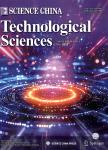版权所有:内蒙古大学图书馆 技术提供:维普资讯• 智图
内蒙古自治区呼和浩特市赛罕区大学西街235号 邮编: 010021

作者机构:School of Energy and Power EngineeringHuazhong University of Science and TechnologyWuhan 430074China Wuhan Second Ship Design and Research InstituteWuhan 430205China
出 版 物:《Science China(Technological Sciences)》 (中国科学(技术科学英文版))
年 卷 期:2024年第67卷第7期
页 面:2087-2098页
核心收录:
学科分类:080903[工学-微电子学与固体电子学] 081702[工学-化学工艺] 0809[工学-电子科学与技术(可授工学、理学学位)] 07[理学] 070205[理学-凝聚态物理] 08[工学] 0817[工学-化学工程与技术] 080501[工学-材料物理与化学] 0805[工学-材料科学与工程(可授工学、理学学位)] 0702[理学-物理学]
基 金:supported by the National Natural Science Foundation of China (Grant No. 52076088) the Core Technology Research Project of Shunde District, Foshan, China (Grant No. 2130218002932)
主 题:phonon transport Monte Carlo simulation transient heat conduction silicon nanofilms local heat source
摘 要:Accurate prediction of junction temperature is crucial for the efficient thermal design of silicon nano-devices. In nano-scale semiconductor devices, significant ballistic effects occur due to the mean free path of phonons comparable to the heat source size and device scale. We employ a three-dimensional non-gray Monte Carlo simulation to investigate the transient heat conduction of silicon nanofilms with both single and multiple heat sources. The accuracy of the present method is first verified in the ballistic and diffusion limits. When a single local heat source is present, the width of the heat source has a significant impact on heat conduction in the domain. Notably, there is a substantial temperature jump at the boundary when the heat source width is 10 *** increasing heat source width, the boundary temperature jump weakens. Furthermore, we observe that the temperature excitation rate is independent of the heat source width, while the temperature influence range expands simultaneously with the increase in heat source width. Around 500 ps, the temperature and heat flux distribution in the domain stabilize. In the case of dual heat sources, the hot zone is broader than that of a single heat source, and the temperature of the hot spot decreases as the heat source spacing increases. However, the mean heat flux remains unaffected. Upon reaching a spacing of 200 nm between the heat sources, the peak temperature in the domain remains unchanged once a steady state is reached. These findings hold significant implications for the thermal design of silicon nano-devices with local heat sources.